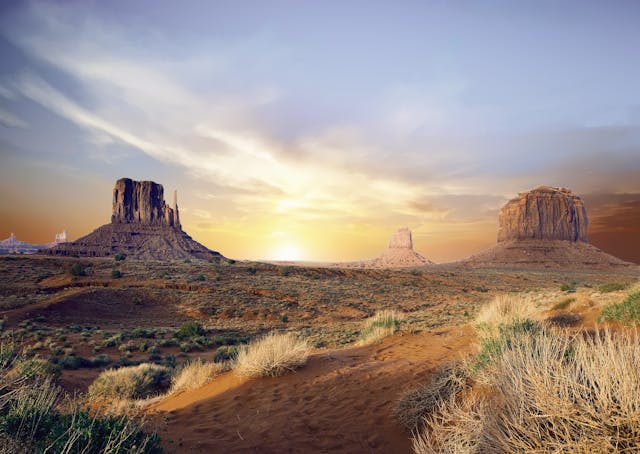The Grand Canyon, one of the most awe-inspiring natural wonders in the world, is a destination that captivates travelers with its breathtaking beauty, diverse ecosystems, and sense of vastness. Whether you’re planning a day trip or a week-long adventure, here’s a comprehensive guide to make the most of your visit.
Where is the Grand Canyon?
The Grand Canyon is located in northern Arizona, USA, and is one of the most visited national parks in the country. This iconic landscape stretches approximately 277 miles (446 kilometers) in length, up to 18 miles (29 kilometers) wide, and a mile (1.6 kilometers) deep. The canyon is divided into two main rims: the North Rim and the South Rim, each offering unique experiences.
- South Rim: Known for its accessibility and facilities, the South Rim is open year-round and attracts the majority of visitors.
- North Rim: Open only from mid-May to mid-October, the North Rim provides a quieter, more secluded experience but requires a bit more planning due to limited access.
How to Get There
There are a few ways to reach the Grand Canyon, depending on where you’re coming from and which rim you plan to visit.
By Car
Most visitors arrive by car, as it provides the flexibility to explore different viewpoints and trails.
- From Phoenix: The South Rim is approximately a 3.5 to 4-hour drive north.
- From Las Vegas: The South Rim is about a 4-5 hour drive, while the North Rim is around 5 hours away.
By Plane
Flying can be a good option if you’re short on time.
- Nearest Airports: Flagstaff Pulliam Airport (closest to the South Rim), Phoenix Sky Harbor, and Las Vegas McCarran.
- Connecting Shuttles: From Flagstaff or Phoenix, shuttle services can take you directly to the South Rim. Grand Canyon Airport, just outside the South Rim, is also an option for small aircraft.
By Train
The Grand Canyon Railway departs from Williams, Arizona, and offers a scenic two-hour ride to the South Rim. This is a nostalgic and relaxing way to reach the canyon without driving.

Best Time to Visit
The best time to visit the Grand Canyon depends on your interests and tolerance for weather conditions. Here’s a breakdown by season:
- Spring (March to May): Mild temperatures make this a great time to visit, especially for hikers. Crowds are smaller in early spring.
- Summer (June to August): This is peak tourist season with the warmest temperatures. Crowds are larger, particularly at the South Rim, but this is also when everything is open, including the North Rim.
- Fall (September to November): Another fantastic time to visit. Temperatures cool down, the crowds thin, and you can still access most trails and viewpoints.
- Winter (December to February): The South Rim remains open, but snow is likely, and temperatures can be quite cold. The North Rim is closed during winter. Winter offers the chance to see the canyon dusted in snow, a truly unique sight with very few crowds.
How Long to Stay
The length of your stay will depend on what you wish to experience:
- Day Trip: If you’re short on time, a day trip to the South Rim allows you to see some of the main viewpoints and walk a portion of the Rim Trail.
- Weekend: Two to three days is ideal for exploring key viewpoints, experiencing a hike, and perhaps taking part in a ranger-led program.
- Extended Stay (3-7 Days): For those looking to dive deep into the Grand Canyon experience, a week-long stay allows for multiple hikes, a rafting trip, and even venturing down to the canyon floor.
Essential Items to Pack
When visiting the Grand Canyon, especially if you’re planning on hiking or exploring beyond the main viewpoints, it’s essential to pack carefully. Here’s a list of recommended items:
- Water: The desert climate is dry, and dehydration is a real risk. Carry plenty of water (at least 3 liters per person for a day hike).
- Snacks and High-Energy Foods: Hiking in the canyon can be strenuous, so pack snacks rich in protein and electrolytes.
- Sun Protection: Sunscreen, sunglasses, a wide-brimmed hat, and lightweight, long-sleeved clothing are essential.
- Comfortable Hiking Boots: Trails can be steep and rocky, so sturdy footwear is a must.
- Weather-Appropriate Layers: Temperatures can vary greatly throughout the day. Bring layers, including a warm jacket if visiting in cooler months.
- First-Aid Kit: Basic supplies, including blister treatment, are useful.
- Maps and Compass or GPS Device: Cell reception is unreliable, so physical maps are highly recommended for navigating trails.
- Camera and Binoculars: To capture the stunning scenery and perhaps spot some wildlife.
- Portable Charger: Keep your devices charged for photos and navigation.
- Permit (If Needed): For those planning to camp overnight below the rim, a backcountry permit is required and must be obtained in advance.

Final Tips for a Memorable Grand Canyon Experience
- Plan Ahead: The Grand Canyon is a popular destination, so book accommodations, permits, and tours well in advance.
- Respect the Environment: Stay on designated trails to protect fragile ecosystems and avoid injuries.
- Take Your Time: The canyon’s beauty is best appreciated without rushing. Take time to enjoy each viewpoint, trail, and scenic stop.
Whether you’re an outdoor enthusiast, a casual visitor, or a family on vacation, the Grand Canyon offers experiences that will stay with you for a lifetime.
Happy adventuring, and enjoy every breathtaking view the Grand Canyon has to offer!
GertieBlu









